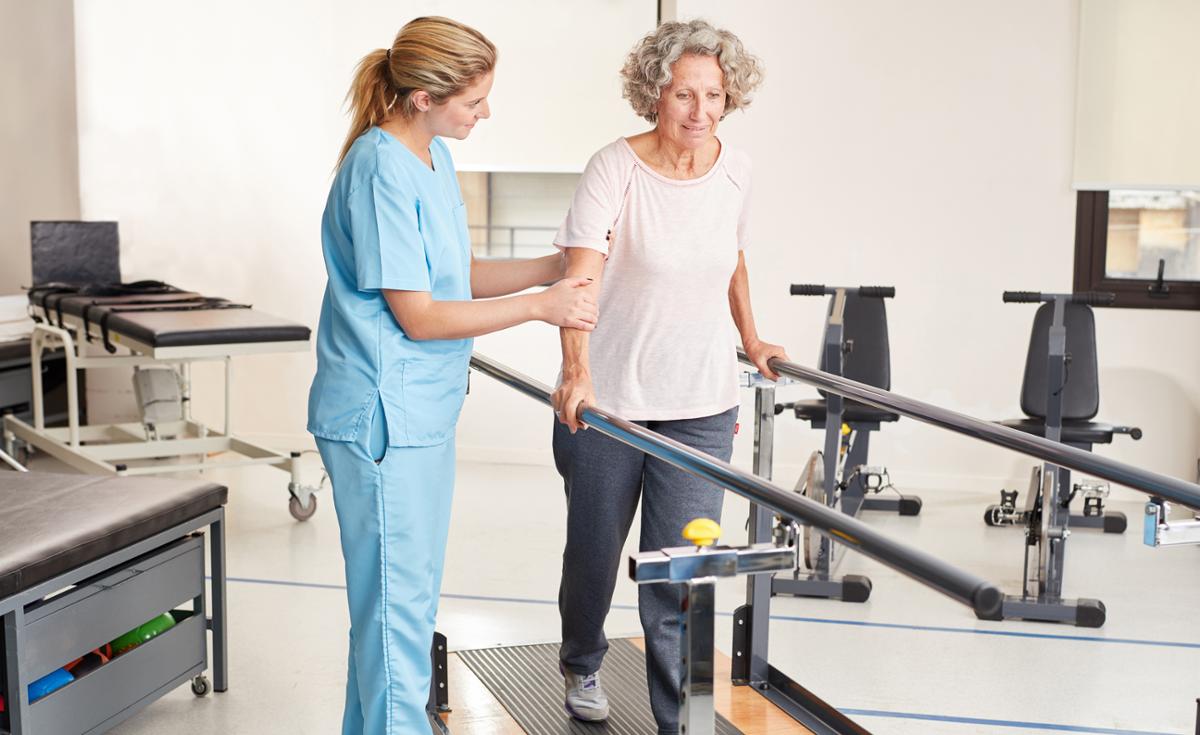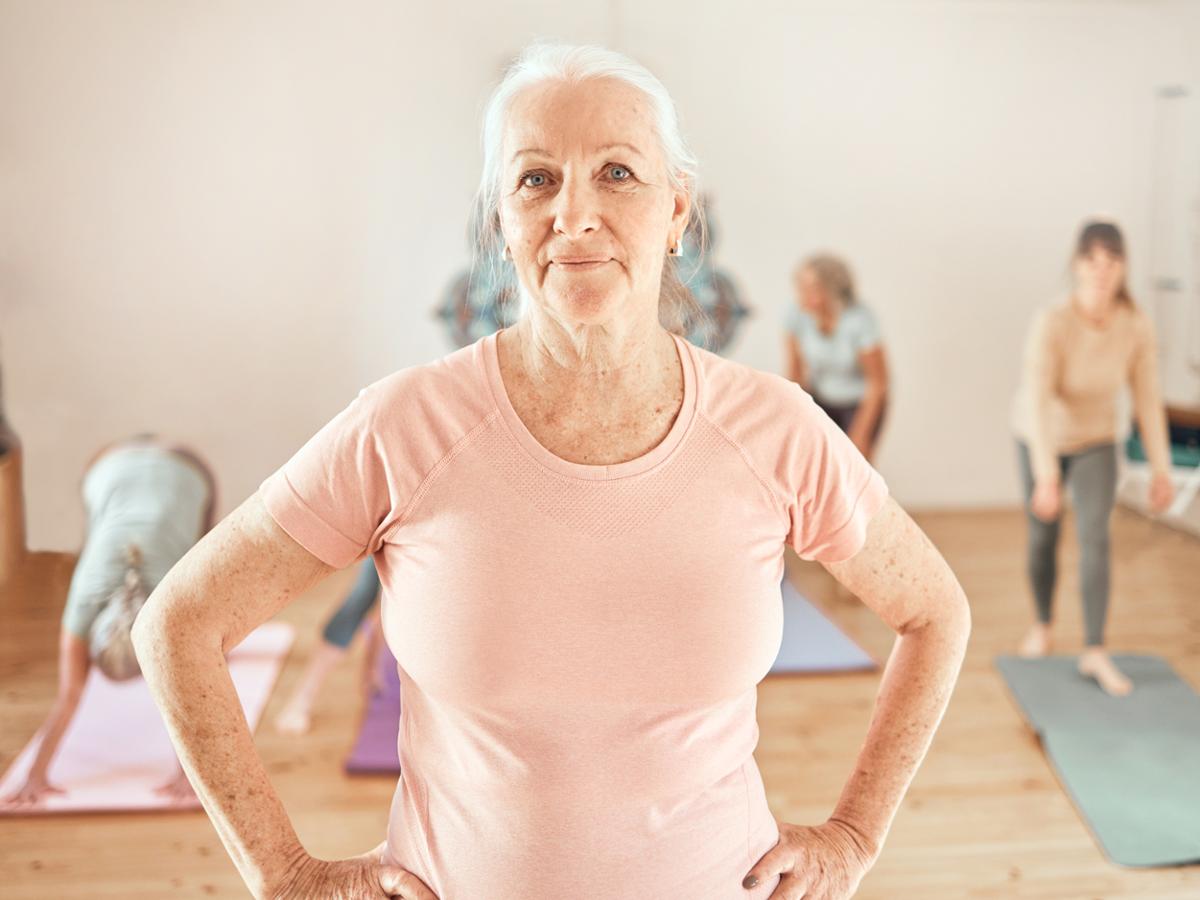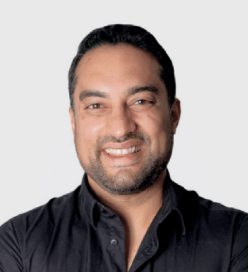Your mission is to elevate the health and fitness industry into wellness. Why does this need to happen?
When I first went onto a hospital payroll, in the late 90s, it was eye-opening for me to start creating wellness programmes in that setting. For the first time I realised there was a whole population which needed something different from what we were offering. There was nothing on my 120-class group exercise schedule which many populations – such as those suffering from diabetes, people who had undergone bariatric surgery or total hip replacement, as well as cardiac and pulmonary rehab patients – could remotely succeed with.
Up until that point in my career I had only ever worked with healthy clients, but there people were shuffling in on walkers and we had to meet them where they were and help them to move just a bit.
We’re facing a public health crisis all around the world, but America is the worst. By 2030, 50 per cent of Americans will have a BMI of more than 30, with all the co-morbidities which come with that.
Figures from 2021 revealed the average American gained 27lbs during the pandemic. In 2021 the surgeon general cited mental health as the number one concern for employers in America, and burnout is following obesity as being recognised as a disease which is a billable condition for health insurance.
The American Psychological Association reports that one in five employees have burnout, but other sources say it’s trending towards one in two. Employers are concerned about how to get their employees healthier, because what we did three, or four years ago won’t work now.
If the average consumer is changing, how can the industry adapt?
The fitness industry needs to grow up. If we don’t, who’s going to take care of all these people with high blood pressure and high BMIs? Where will they get lifestyle education? Many fitness professionals don’t see themselves as educators, but they need to start being interested in health outcomes.
If we just keep running the same classes on our schedules and don’t start adapting programmatically – both in lifestyle and education classes – we’ll never attract new people. To continue working with the same highly-motivated 10 per cent just isn’t sustainable.
Lots of what we do in clubs isn’t meeting the needs of those who are overweight, depressed, burned out, freaked out or whatever. We need beginner and intro programmes, where people can meet like-minded communities. We should be running meditation, mindfulness, breathing classes, yoga and walking groups.
The industry has been built on the path of least resistance by people who are passionate about exercise, but all we’re doing is getting the fit fitter. With a switch in focus, we have the opportunity to deliver health and wellness education to the masses.
Is it realistic for the fitness industry to start working alongside the medical community to turn around the lives of those with health issues?
Yes, but currently there’s resistance from both sides. We can’t assume physicians will come knocking on our door. They only refer to trusted partners and look for pristine environments which mirror theirs. They want to know the fitness professional is certified, degree-qualified, punctual, that will do what they say they will do and they want to see data-driven, evidence-based health outcomes.
Lots of fitness professionals don’t work in that capacity. No outcomes are produced and they offer no pre- or post-session assessments. Health club and gym owners need to lean into the idea that we’re all responsible for changing the health outcomes of the population. If they don’t help, things won’t change.
How can they make the crossover?
Attend to the non-exercisers. It’s about choosing the right language, marketing tools and imagery to be more representative and also changing the programming. For example, when I was working in hospital wellness, I would run an eight-week Feel Better programme, to educate people on what to eat, what to drink, how to move, social connection and fostering better sleep patterns.
Very often one of the most powerful aspects of these groups was that they would meet like-minded people facing the same challenges. If we want to succeed with people with behavioural health issues we need to stop talking about exercise and lead with wellness, addressing their barriers and unpicking traumas which are leading to self-sabotaging behaviours around their health.
Once they have a programme, fitness professionals then need to measure the outcomes with pre- and post-programme assessments, looking at height, weight, BMI, blood pressure and finding out about their sleep, water intake and happiness levels. Then they need to repeat these measurements at the end of the block of sessions.
Armed with the evidence from this pilot, operators can either approach a healthcare provider about co-creating a programme, or seek community wellness grants to extend the programme before approaching the healthcare professionals.
When meeting medical professionals, it’s very important to turn up in professional attire: not leggings. Show you’re knowledgeable, with evidence-based practises behind you.
The data-driven and evidence-based approach is really the way for the industry to grow up. It’s also important to make sure facilities are welcoming to all populations, so a 70-year-old man who’s had a heart attack can go into a gym, see someone like him working there and feel as though he belongs.
Do you see any real change starting to happen yet?
We’ve got a lot of work to do. I’m one of the few on the lecture circuit speaking about burnout, resilience and wellbeing. Given the nature of the conventions I attended last year, I don’t think the industry is fully aware of the health crisis.
I don’t see group exercise changing to be more accommodating to those with trauma, burnout, depression or chronic diseases. I don’t see intro, beginner, mindfulness, or mind-body appearing on group exercise rosters. There is little or no discussion around mental health. Other than staffing, the industry is mainly focused on new products and apps and shiny things.
But there’s a critical mass of people who need help and lots of work to do, but also huge opportunities. There’s never been a better time for fitness professionals to shine, to find the gaps in public health and step in.
If health and fitness professionals don’t step up to become wellness professionals and partner with allied health professionals to co-create health and wellness programmes and classes, who will take care of our people?
The medical wellness model works and more fitness centres could be adopting it with success.
























































